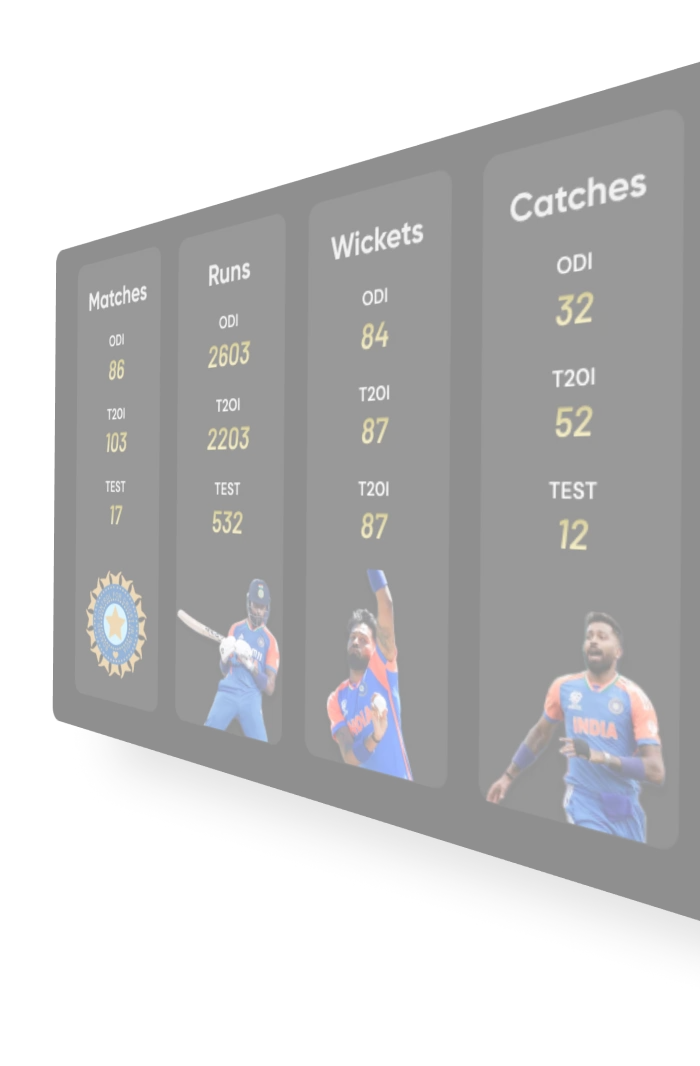
Table Of Contents
This article looks at all the major reasons behind this decline. Each one tells a sad story. Each one is a warning sign. Unless big steps are taken soon, these countries may continue to fall further in the world of cricket, as underdog nations are on the rise!
The first and biggest problem is the poor management of cricket boards. In all of these four countries, the cricket boards have made many mistakes. They lack planning, they lack vision, and the most important of all, they lack leadership.
In Pakistan, the Pakistan Cricket Board (PCB) has seen many changes in leadership. Every time the government changes, the board also changes. Coaches are removed suddenly. Captains are dropped without reason. Even players don’t know who is in charge.
In Bangladesh, there have been multiple cases of infighting. The board often interferes in team selection. Politics plays a role in cricket decisions. Many believe talented players are ignored because of personal bias.
In Sri Lanka, the board has been accused of corruption several times. Money meant for players or stadiums has often been misused. The same is true in the West Indies. There, players have gone on strike in the past due to unpaid salaries.
When the board is weak, the team suffers. Decisions are made without thinking about the future of the squad. There is no plan to build new talent. There is no clear idea of how to compete with top cricketing nations.
Former players are also not respected enough. Legends like Mahela Jayawardene, Brian Lara, Misbah-ul-Haq, and Wasim Akram have offered to help and train the youngsters out of their own passion for the sport, but their advice is often ignored.
Until these boards become professional, transparent, and stable, no real progress can happen in their cricket. The players and fans deserve better!

BCB President Faruque Ahmed sacked as the President after NSC withdraws support

PCB to Reshuffle Selection Committee, Make Major Changes

PCB Accused of Financial Irregularities by Auditor General of Pakistan
All four countries have had their share of legends. Players who could change a match on their own. Fans still remember Brian Lara’s double hundreds, Wasim Akram’s deadly swing, and Sangakkara’s calm hundreds. But those players are gone, and few new ones are coming through.
One major reason is that young players today do not aim to become Test stars. They grow up watching T20 cricket. They want fame fast. They want money early. They don’t want to play five-day cricket. This change in attitude is dangerous for the longer formats of the sport. The West Indies side that faced Australia for three tests at home were missing some great players who were busy playing in other T20 leagues. A special meeting was held by the Cricket West Indies in which they made a 100-point plan to improve the state of cricket in the region.
Test and ODI cricket need skill, patience, and discipline. But young players only want to score quickly, smash huge sixes, and play in flashy leagues.
In Bangladesh, Sri Lanka, and the West Indies, the batting in Test matches is weak. The players give their wickets away. In Pakistan, fast bowlers like Shaheen Afridi and Naseem Shah are talented, but even they struggle with consistency. Their inability to bowl longer spells in ODIs has resulted in Pakistan dropping to fifth place in the latest ICC rankings. The Pakistani team's sunk further after they lost a three-match ODI series to the West Indies after 34 years.
Debut ages are also rising. Pakistan had debutants aged 27 and 32 in a recent T20 series. That shows a lack of young, ready talent.
The love for the longer format is dying. Domestic Test tournaments don’t get support. Stadiums are empty, and local matches are not even broadcast on television.
If this continues, the next generation won’t care about Test cricket or ODIs. And without the longer formats, cricket is sure to lose its heart.


Cricket is a tough sport. And it’s getting tougher with time. With so many matches, players have little time to rest. They fly from one country to another. They play Tests, ODIs, T20s, and league cricket. Injuries are becoming common.
In Pakistan, Shaheen Afridi missed important games due to injury. Haris Rauf has also struggled to stay fit. The same is true in the case of the West Indies. Their bowlers often break down.
Sri Lanka and Bangladesh players also face fitness problems. Many cannot play back-to-back matches. Their bodies are not ready for the demands of Test cricket.
One big reason is poor fitness management. In top teams like India and Australia, players follow strict fitness programs. Their training and diet plan are world-class.
In contrast, some players in these countries are unfit but still play. This puts pressure on others. It also affects the fielding and running between wickets.
Fitness is not just about muscles. It’s about staying injury-free. It’s about performing well over long periods. It’s about surviving five days in hot weather.
Also, players do not get time to recover. They are moved quickly from leagues to national duty. There is no rotation plan. This leads to burnout and players becoming injury-prone.
Boards must focus on fitness. Young players must be trained early. They need better food, better trainers, and better rest periods. Otherwise, talent will keep breaking down, and broken players cannot win games.
Another major issue is the condition of stadiums and cricket infrastructure. In modern cricket, good facilities are a must. But in these countries, stadiums are often old and badly maintained.
In Pakistan, only a few venues like Lahore and Karachi have decent facilities. Smaller cities are ignored. Many grounds have poor lighting and dirty dressing rooms. This discourages young players.
In Bangladesh, stadiums are overused. The pitches break down fast. Matches become boring. Rainwater drainage systems don’t work well. Many domestic games are played on sub-standard grounds.
Sri Lanka has some beautiful stadiums, like Galle and Kandy. But many others need repair. The boards don’t invest enough. Technology like pitch monitoring and player tracking is missing. Training centers are limited.
The West Indies have a unique challenge. Their team represents many islands. Each one has its own stadium. But only a few, like Kensington Oval in Barbados, are of international quality. Others don’t meet global standards. There’s also no clear plan to upgrade them.
Due to poor infrastructure, many top teams don’t want to tour these countries. This means less home cricket, causing very few fans in the stands cheering for their home team. Young children don’t get the opportunity to get inspired and take up the sport.
A good stadium isn’t just for players. It helps attract fans. It helps generate money. It brings energy to the game. Without modern stadiums and quality training centers, these teams can’t move forward.
If boards don’t invest in infrastructure, the talent pipeline will dry up sooner than expected. And without that, international success is impossible.


T20 leagues across the world are super thrilling and exciting. They are fast, colorful, and full of money. But they are causing major problems to cricket boards as they shift the focus of players.
In the West Indies, players often skip national duty to play in leagues like IPL, BBL or The Hundred. The board cannot stop them from playing. One major factor is that the money is too good in these leagues. Brian Lara went on to blame the IPL for West Indies' poor performance in the recently concluded test series against Australia.
Nicholas Pooran retired from ODIs at just 29. Others may follow. They prefer to travel the world, play in 20-over games, and earn millions of dollars.
In Pakistan, the PSL is successful. But it’s hurting domestic cricket. Players focus only on T20s. They forget about First-Class cricket. The same is true in Bangladesh with the BPL. Sri Lanka has started its own league. But it has not helped the national team improve.
Domestic cricket is the engine of any cricket team. If players don’t take it seriously, they won’t grow. They won’t learn how to bat for hours or bowl long spells.
Also, fans are now watching only T20 leagues. National team matches get fewer viewers. Sponsors also lose interest. The pride of playing for the country is slowly disappearing.
Players must be given a balance. Leagues are good, but they should not replace national duty. Boards must fix the calendar or categorise players as per the formats to give them independence. Players also must be paid well by the national cricket boards so that they don’t leave for money.
If leagues keep growing and national cricket keeps shrinking, then the game will change forever, and not for the better!
In the past, players would retire after 35 or 36. They would play around 100 Tests and often become legends in one or the other format. Today, many live in their 20s. They don’t wait to become great. They just want to earn and leave.
Nicholas Pooran is a recent example. He was only 29 when he retired from international cricket. He is not alone. Many young players want to follow this path.
They see money in leagues. They don’t want to play for pride. They don’t want to travel with the team, face criticism, or deal with politics. They want peace and pay. This is a loss for cricket.
In Pakistan, young stars like Mohammad Amir also left early. In the West Indies, several players are focusing only on leagues. In Sri Lanka and Bangladesh, some players delay their national returns after playing in leagues.
These early retirements create a big gap. Teams lose experienced players. Young ones are rushed in. The quality drops, and the teams keep losing in international competitions.
Fans often feel cheated because of this. They want to see their stars wear the national jersey. But the stars disappear. Boards must find ways to stop this. Players must be made to feel proud of playing for their country. They must be supported, not criticized; moreover, they must be paid enough, which justifies the efforts they put into the sport.
If this trend continues, cricket will turn into a league-only sport. And the dream of representing your country will die.


Cricket in Bangladesh, Sri Lanka, Pakistan, and the West Indies is in trouble. The reasons are many: bad management, weak infrastructure, lack of planning, rise of leagues, and loss of pride.
These countries gave the world some of its greatest cricketers. They created unforgettable memories. But today, they are far behind. The boards must wake up. They must fix their mistakes. They must invest in players, stadiums, and systems.
Players must also understand their role. Cricket is not just a job. It’s a responsibility. It’s an honor to wear the national cap.
Fans still love the game. But they want to see fight, heart, and effort. They want to believe again. If the right steps are taken, there is still hope. These teams can rise again. They can produce stars again. They can make the world fear them again.
But time is running out as the world is moving forward, and these nations must not be left behind!




More Links